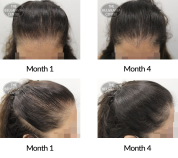-
Male Hair Loss Conditions
- Male Pattern Hair Loss
- Other Conditions
-
Male Hair Loss Treatments
- Hair Loss Treatments – A Guide
-
Patterns of Hair Loss
- Receding Hairline
- Thinning Crown
- General Thinning
-
Hair Loss Success Stories
- Hair Regrowth Photo-Gallery
-
Female Hair Loss Conditions
- Hair Loss in Women - Guide
- Female Pattern Hair Loss
- Telogen Effluvium (TE)
- Diffuse Thinning | Chronic TE
- Alopecia Areata
-
Female Hair Loss Treatments
- Female Hair Loss Treatments - A Guide
- Belgravia High-Strength Minoxidil
- Hair Vitalics For Women
- Clinical Treatment Therapy
-
Hair Loss Success Stories
- Women’s Hair Regrowth Photo-Gallery
-
Back
-
Male Hair Loss Conditions
- Male Pattern Hair Loss
- Other Conditions
-
Male Hair Loss Treatments
- Hair Loss Treatments – A Guide
-
Patterns of Hair Loss
- Receding Hairline
- Thinning Crown
- General Thinning
-
Hair Loss Success Stories
- Hair Regrowth Photo-Gallery
-
Back
-
Female Hair Loss Conditions
- Hair Loss in Women - Guide
- Female Pattern Hair Loss
- Telogen Effluvium (TE)
- Diffuse Thinning | Chronic TE
- Alopecia Areata
-
Female Hair Loss Treatments
- Female Hair Loss Treatments - A Guide
- Belgravia High-Strength Minoxidil
- Hair Vitalics For Women
- Clinical Treatment Therapy
-
Hair Loss Success Stories
- Women’s Hair Regrowth Photo-Gallery
Trichotillomania
*The Belgravia Centre does not treat Trichotillomania. Please contact a dermatologist or your GP.
Trichotillomania is based on an obsession with the hair.
What is Trichotillomania?
Trichotillomania is based on an obsession with the hair. People with Trichotillomania tug, twist or pull their hair out creating bald patches or areas of diffuse thinning. The hair for plucking is selected from other hair based on it being different in some way, perhaps feeling rough to the touch or more curly than other fibres. Once a bald area has been created it becomes even more enticing to pull at the hair around it, making the alopecia patch larger. Sometimes Trichotillomania is more generalised and looks like a diffuse alopecia. Trichotillomania is generally a non-scarring non-inflammatory form of hair loss, although long term repeated pulling over several years may result in irreversible scarring and damage to some hair follicles.
Trichotillomania affects 2-3% of all people with hair loss, making it a fairly common condition. Studies have identified the scalp as being the most commonly affected area. Approximately 70% of cases of Trichotillomania involve scalp hair loss, 50% involve eyebrows or eyelashes, 30% include pubic hair, 20% body hair and about 10% involve facial hair.
As well as plucking the hair, individuals with Trichotillomania may then chew or eat the hair. Hair eating is known as Trichophagia. About 40% of cases involve hair chewing while 10% of individuals with Trichotillomania eat their hair. Eating hair is unwise as it is very irritating to the stomach and can lead to digestion problems and ulcers.
Many individuals who suffer from Trichotillomania are often unaware of what they are doing and do not realise the reason for their hair loss.
Trichotillomania can affect both children and adults although the adult version almost always affects women. Psychiatrists regard Trichotillomania as a psychological disorder and treatment will usually involve therapy.
Can We Treat Trichotillomania and How Successful is Treatment?
Depending on the severity of the case of Trichotillomania, it is possible to treat the condition with medication. We recommend you contact your GP or a dermatologist about this. The Belgravia Centre does not treat Trichotillomania but can provide you with recommendations if you message the clinic and advise you are enquiring about Trichotillomania.
The factor that decides whether medication will succeed in growing back hair that has been affected by Trichotillomania is down to whether the follicles are still functional or not, and whether the habit of pulling the hair is manageable. As well as treatment, non-surgical hair replacement is a successful technique that can be used for Trichotillomania. A hair integration system not only covers up the appearance of Trichotillomania, but also prevents the individual from getting to the area, which can help beat the habit. We recommend you contact a hair replacement specialist as we do not offer this at The Belgravia Centre.
It is also important to get help with your mental health and learn useful techniques to keep the compulsive habit of pulling the hair under control. We recommend you contact your GP or psychotherapist for further support.

Belgravia Consultations
Submit an instant online consultation so that one of Belgravia’s hair loss specialists can diagnose your condition and recommend an effective course of treatment, wherever you live. Or, arrange a free consultation at one of our Central London clinics.
Success Stories
Updated on a daily basis and testimony to the levels of regrowth experienced by so many of our patients.
“I can’t recommend Belgravia highly , so professional and staff are so…”

“I can’t recommend Belgravia highly , so professional and staff are so…”

“I can’t recommend Belgravia highly , so professional and staff are so…”

“I can’t recommend Belgravia highly , so professional and staff are so…”
